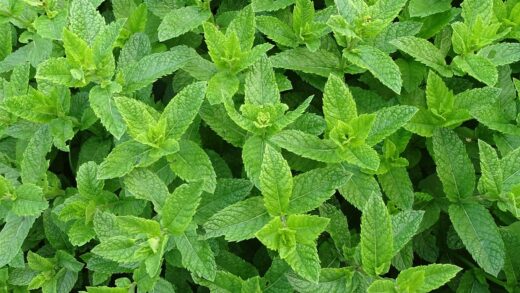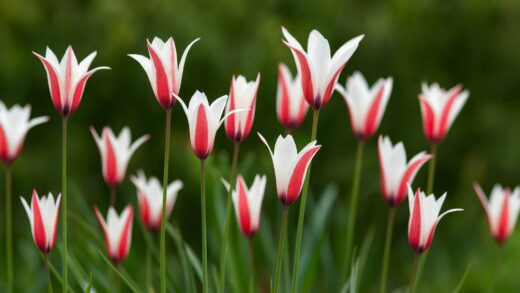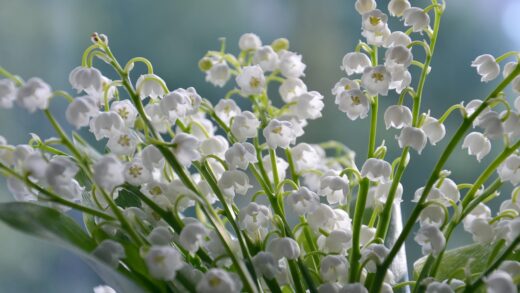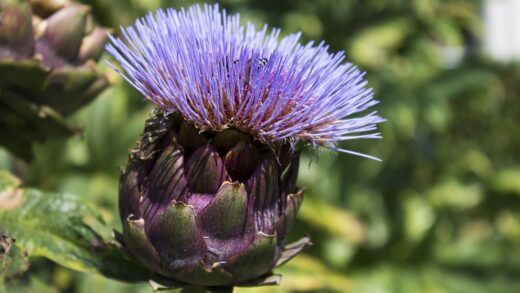Understanding and meeting the water requirements of weigela is fundamental to its health, vigor, and flowering potential. Like most garden shrubs, weigela requires a consistent supply of moisture to support its physiological processes, from photosynthesis to nutrient transport. However, the specific amount and frequency of irrigation can vary significantly based on factors such as the plant’s age, soil type, climate, and time of year. Providing the right amount of water—avoiding both drought stress and waterlogged conditions—is a delicate balance that, once mastered, will ensure the shrub thrives in the landscape.
The primary goal of any irrigation strategy for weigela is to maintain adequate moisture in the root zone, the area of soil where the plant’s roots are actively growing. For a newly planted shrub, this zone is relatively small and shallow, making it susceptible to drying out quickly. As the plant matures and establishes a more extensive root system, it becomes more drought-tolerant, but it will still perform best with supplemental watering during dry periods. An effective watering regimen delivers moisture directly to this root zone, encouraging deep root growth and making the plant more resilient.
It is crucial to recognize that both overwatering and underwatering can be detrimental to the health of a weigela. Insufficient water leads to wilting, leaf drop, and reduced flowering, and in severe cases, can be fatal. Conversely, excessive watering or poor drainage can lead to root rot, a serious condition where the roots are deprived of oxygen and begin to decay, ultimately killing the plant. Therefore, a successful irrigation plan is not just about applying water, but about managing soil moisture effectively.
This article will explore the specific water needs of weigela, offering practical guidance on how to irrigate effectively throughout the plant’s life cycle. We will discuss techniques for watering established shrubs, the particular needs of new transplants, and how to interpret the plant’s signals to adjust your watering practices accordingly. By understanding these principles, you can provide your weigela with the optimal level of hydration it needs to flourish.
Understanding weigela’s water needs
Weigela is considered to have average water needs, thriving in soil that is consistently moist but well-drained. In its natural habitat, it would experience periods of regular rainfall, which is what gardeners should aim to replicate through irrigation. During the active growing season, from spring through summer, the shrub’s demand for water is at its highest, as it is actively producing leaves, stems, and flowers. During this period, a general guideline is to provide the equivalent of about 2.5 centimeters of water per week, either from rainfall or supplemental irrigation.
More articles on this topic
The plant’s water requirements are not static; they fluctuate with the weather and the plant’s growth stage. During hot, dry, and windy conditions, water loss from the leaves (transpiration) increases dramatically, and the shrub will require more frequent watering to compensate. Conversely, during cool, cloudy, or humid weather, the plant’s water needs decrease. A vigilant gardener learns to adjust their watering schedule based on these environmental cues rather than adhering to a rigid, fixed timetable.
The age and size of the weigela also play a significant role in its water consumption. A small, newly planted shrub has a limited root system and requires frequent watering to become established. A large, mature shrub has a much more extensive root system that can explore a greater volume of soil for moisture, making it more resilient during short dry spells. However, its larger size also means it has a greater leaf surface area, leading to higher overall water use during the growing season.
It is also important to understand that weigela’s water needs decrease significantly when the plant enters dormancy in the late autumn and winter. As the leaves drop and metabolic activity slows, the plant requires very little moisture. In most temperate climates, natural precipitation is sufficient to meet the plant’s needs during this period. Supplemental watering during dormancy is generally unnecessary unless there is a prolonged and unusual winter drought.
Irrigation techniques for established shrubs
For established weigela shrubs—those that have been in the ground for two or more years—the most effective irrigation technique is deep, infrequent watering. This method encourages the development of a deep and extensive root system, which makes the plant more drought-tolerant and stable. Shallow, frequent watering, in contrast, encourages roots to stay near the soil surface, where they are more vulnerable to drying out and temperature extremes. The goal is to moisten the entire root zone, which for a mature shrub can extend 30 centimeters or more into the soil.
More articles on this topic
The best way to deliver water is slowly and directly to the base of the plant, avoiding the foliage as much as possible. Using a soaker hose or a drip irrigation system is ideal, as these methods apply water directly to the soil, minimizing evaporation and reducing the risk of fungal leaf diseases that can be exacerbated by wet leaves. If using a handheld hose, set the nozzle to a gentle flow and allow the water to soak in slowly and deeply around the drip line of the shrub, which is the area on the ground corresponding to the outermost reach of its branches.
The frequency of watering will depend on your specific soil type and recent weather patterns. In sandy soils that drain quickly, watering may be needed more often than in heavy clay soils that retain moisture for longer. A reliable way to determine when to water is to check the soil moisture manually. Insert your finger or a trowel into the soil near the base of the plant; if the top 5 to 7 centimeters are dry, it is time to water again.
Timing your irrigation is another key to efficiency. Watering early in the morning is the most effective time, as it minimizes water loss to evaporation and allows the foliage to dry completely before nightfall, further reducing disease risk. Watering in the heat of the day can lead to significant evaporative loss, while evening watering can leave the foliage damp overnight, creating an ideal environment for fungal pathogens to thrive.
Watering newly planted weigela
The water requirements of a newly planted weigela are significantly different from those of an established shrub. During the first growing season, the plant’s primary task is to develop a robust root system that can support it in the future. Until this root system is well-established, the plant is highly dependent on the gardener for a consistent supply of moisture. The small root ball it arrives with can dry out very quickly, making regular watering absolutely critical in the weeks and months following planting.
Immediately after planting, the weigela should be watered deeply to settle the soil and eliminate air pockets. For the first two weeks, it is advisable to check the soil moisture daily and water whenever the top few centimeters feel dry. The goal is to keep the root ball and the surrounding soil consistently moist, but not saturated. This initial period is the most critical for preventing transplant shock and ensuring the plant’s survival.
As the weeks progress, you can gradually reduce the frequency of watering while continuing to apply the water deeply. This encourages the roots to grow outwards and downwards in search of moisture, which is the key to successful establishment. Instead of a fixed schedule, rely on checking the soil moisture to guide your watering practices. A typical schedule might involve watering deeply two to three times a week for the first month, then tapering to once a week for the remainder of the first growing season, always adjusting for rainfall and temperature.
It is crucial to continue this dedicated watering regimen throughout the entire first year, including into the autumn. A common mistake is to reduce watering too early, assuming the plant is established before it actually is. Providing adequate moisture until the ground freezes will ensure the plant enters its first winter well-hydrated and prepared for the following spring’s growth.
Recognizing signs of overwatering and underwatering
Learning to read the signs of water stress in your weigela is a vital skill for maintaining its health. Underwatering is often the easier condition to recognize. The most common symptoms include wilting or drooping leaves, particularly during the hottest part of the day. The leaves may also appear dull, lose their turgidity, turn yellow or brown, and eventually become dry and crispy at the edges before dropping from the plant. A lack of water during bud formation can also lead to poor flowering or bud drop.
Overwatering, while stemming from good intentions, can be even more damaging and its symptoms can sometimes be confusingly similar to those of underwatering. A weigela suffering from waterlogged soil and root rot may also have yellowing, wilting leaves. The key difference is that the soil around an overwatered plant will be consistently wet or soggy. The leaves may feel soft and limp rather than dry, and the overall growth of the plant will be stunted. In advanced cases, the base of the stems may become dark and mushy.
Distinguishing between the two conditions requires a physical check of the soil. If you see wilting leaves, always check the soil moisture before reaching for the hose. If the soil is dry several centimeters down, the plant needs water. If the soil is wet, withhold water and investigate the drainage of the site. Improving drainage may involve amending the soil with organic matter or, in severe cases, replanting the shrub in a more suitable location or a raised bed.
Proactive monitoring is the best approach. By regularly checking your soil and observing your plant’s appearance, you can catch water-related issues early and make the necessary adjustments to your irrigation practices. A healthy, properly watered weigela will have vibrant, turgid leaves and exhibit steady growth. Learning to provide this balance is a cornerstone of successful weigela cultivation.
The impact of soil type on watering frequency
The type of soil in your garden has a profound impact on how you should water your weigela, as it directly governs how water is absorbed, retained, and made available to the plant’s roots. Soils are generally categorized based on their particle size into three main types: sand, silt, and clay, with most garden soils being a combination known as loam. Understanding your specific soil composition is crucial for developing an effective and efficient irrigation strategy that prevents both drought stress and waterlogging.
Sandy soils are composed of large particles, which create large pore spaces. This structure allows water to drain through very quickly, and while it provides excellent aeration, it does not retain moisture well. If your garden has sandy soil, you will need to water your weigela more frequently but with less volume per application. The rapid drainage means the root zone can dry out quickly, especially during hot weather, so consistent monitoring is essential to prevent the plant from wilting.
Clay soils, in contrast, are made up of very fine particles with very small pore spaces. This composition allows clay soil to hold a large amount of water for extended periods, but it can also lead to poor drainage and compaction. For weigela planted in heavy clay, watering should be done less frequently but more deeply and slowly. It is critical to allow the soil to dry out partially between waterings to ensure the roots have access to oxygen. Applying water too quickly to clay soil can lead to runoff rather than absorption.
The ideal soil for weigela is a well-draining loam, which contains a balanced mixture of sand, silt, and clay. Loamy soils offer the best of both worlds: good water retention and adequate drainage. Even in ideal soil, however, watering practices must be adjusted based on weather conditions. The key takeaway is that there is no one-size-fits-all watering schedule; it must be tailored to the unique interplay between your climate and your soil’s physical properties. Amending any soil type with organic matter, like compost, is the best way to improve its structure and create a more forgiving medium for your plants.


















